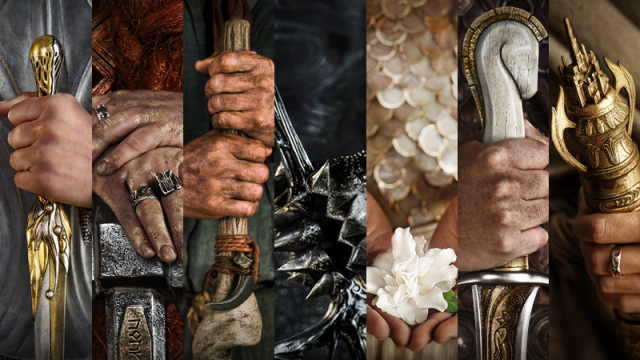Amazon has spent years being very cryptic about just what its Lord of the Rings streaming show was going to be about. We got a rough time period, give or take a few thousand years. Hell, we very recently just got a name — The Rings of Power — which only tells us that this Lord of the Rings show will be about rings! And now, it’s even more mysterious.
Amazon has officially released a series of character posters depicting just some of the vast, vast array of denizens of Middle-earth who will appear in The Lord of the Rings: The Rings of Power. Here’s the twist though: we have very little clue as to just who they all are, because the character posters don’t come with a character name. Each one is also just a shot of their chest and hands. Which, OK, fair, in a show about Sauron’s forging of the Rings of Power, those hands are pretty important. They don’t really tell us all that much… but when has that stopped us from speculating wildly before? Let’s take a look at the lovingly rendered digits of Tolkien’s folk.
To Dungeons Deep, and Caverns Old

Our first poster is one of several to feature gold-dusted hands, which makes sense here as this is, judging by the runic hammer and the lengthy beard, one of the Dwarves. We know that one of the side effects of the rings of power gifted to the seven Dwarf-Lords was that it made them crave collecting vast riches, making them the eventual prime target of gold-hoarding dragons.
A Golden Tower

This mysterious figure is holding a golden staff topped with a very interesting looking city — a skyline dominated by a golden tower. If this could be the scepter of Annúminas — the capital city of the Kingdom of Arnor, meaning the “Tower of the West” in Sindarin — then this possibly could be the hands of Elendil, one of the surviving Númenóreans who fled the destruction of the island kingdom, and who goes on to be a very important figure in the alliance between Elves and Men to bring down Sauron.
Sindarin Scrolls

Whoever this red-robed person is, they’re opening up a scroll featuring some Sindarin — the language of the Elves.
And My Bow!
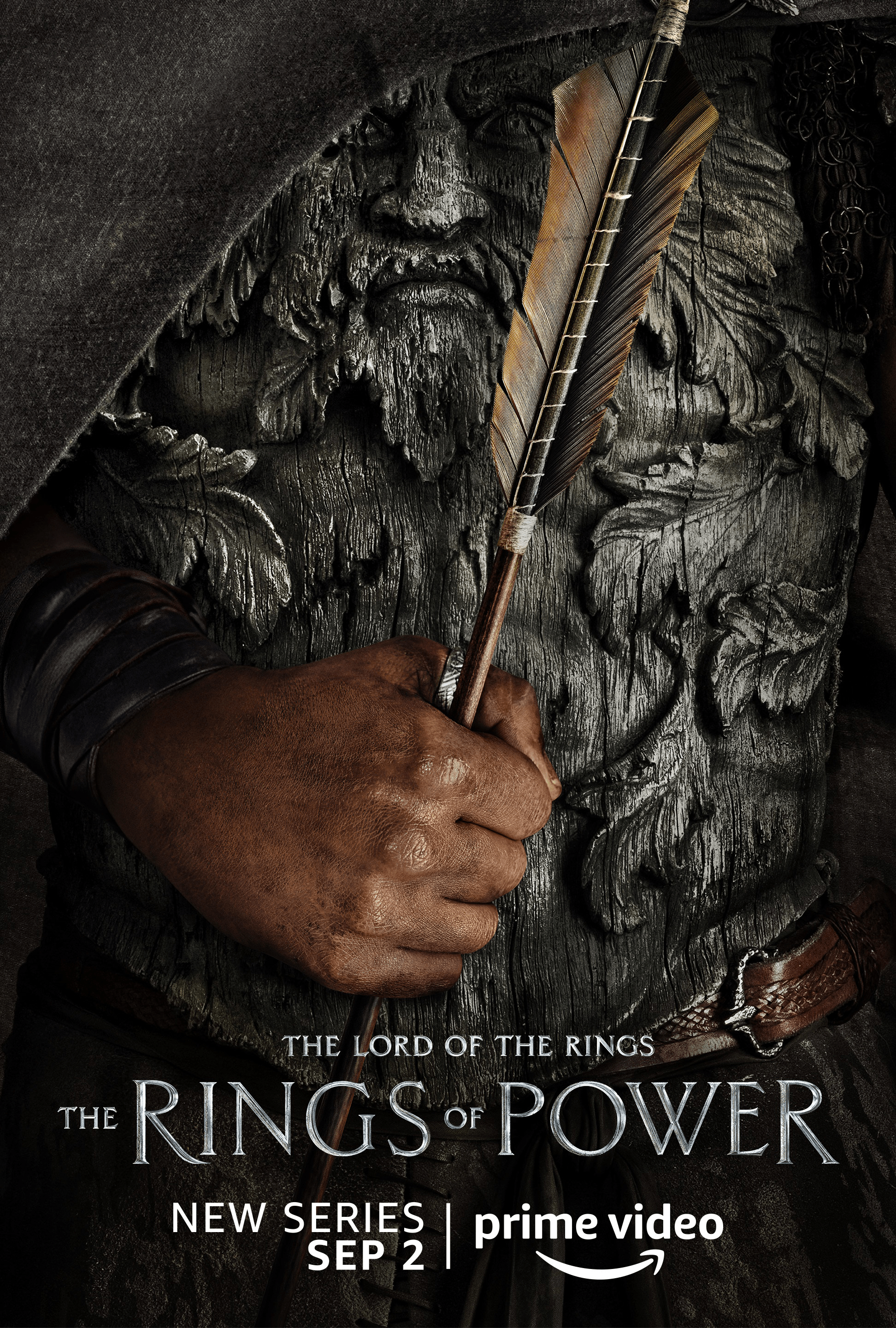
There’s plenty of notable people blessed with bow skills in Middle-earth, so trying to guess who this is is like shooting that arrow into a much, much larger pile of arrows. But the arrow and the ornately carved, leaf-covered armour seen here could at least suggest that this is a Silvan Elf, or a Wood Elf, one of the subspecies of the Elves that spent thousands of years separated from the other Elven subspecies, before re-encountering them again in the Second Age.
No Hammer, But Plenty Sickle

Even more mysteries abound, as all we have to go on here is a well-hewn sickle. The robes aren’t as ornate as others we’ve seen, so this may be a more lowly status farmer or tradesperson of some kind.
The Blade That Was Broken

This very interesting hilt suggests an ancient sword — and of course, we know there’s the iconic broken-and-reforged blade Narsil, Elendil’s sword, but this show is set all before that, so it’s likely not what we’re seeing here.
Muster the Not-Rohirrim

Now of course, this sword is jam packed with equestrian iconography that we know is deeply associated with one human kingdom in particular in Middle-earth: Rohan and its Horse-Lords. But Rohan wasn’t founded until the Third Age, and the descendants of the Rohirrim, the Éothéod, also rose to prominence in the Third Age, so it’s likely not them. Further descendants like the Northmen of Rhovanion? Or just someone else really into horses?
Nuts to You

Once again, this is clearly not meant to be someone of high status, given the state of the clothing and their messy hands. The acorns likely suggest a forager — and perhaps a halfling. The Hobbits as we know them as the Shirefolk in Lord of the Rings didn’t move to that region of Middle-earth until the beginnings of the Third Age, so this might be one of their ancestral breeds. We know the series is looking to introduce one such faction, the Harfoots, at least.
When is a Staff not a Staff?

Another mysterious implement is our biggest clue here, as are the similarly worn-down clothes. It might look at first like some kind of staff — which might have you conjuring images of the Istari, the magical wizards that counted Gandalf among them, but the Second Age is too early for their arrival. That, and Amazon Studios’ own captioned description of this poster on social media describes it as a “primitive farm implement of some sort.”
Berry Nice

Another forager, similar to the one with the acorns — and given the massive size of those berries, this appears to be at least one of the smaller races of Middle-Earth. Another Harfoot? Perhaps a dwarf who’s really fond of fruit? Hard to say.
More Mysterious Missives
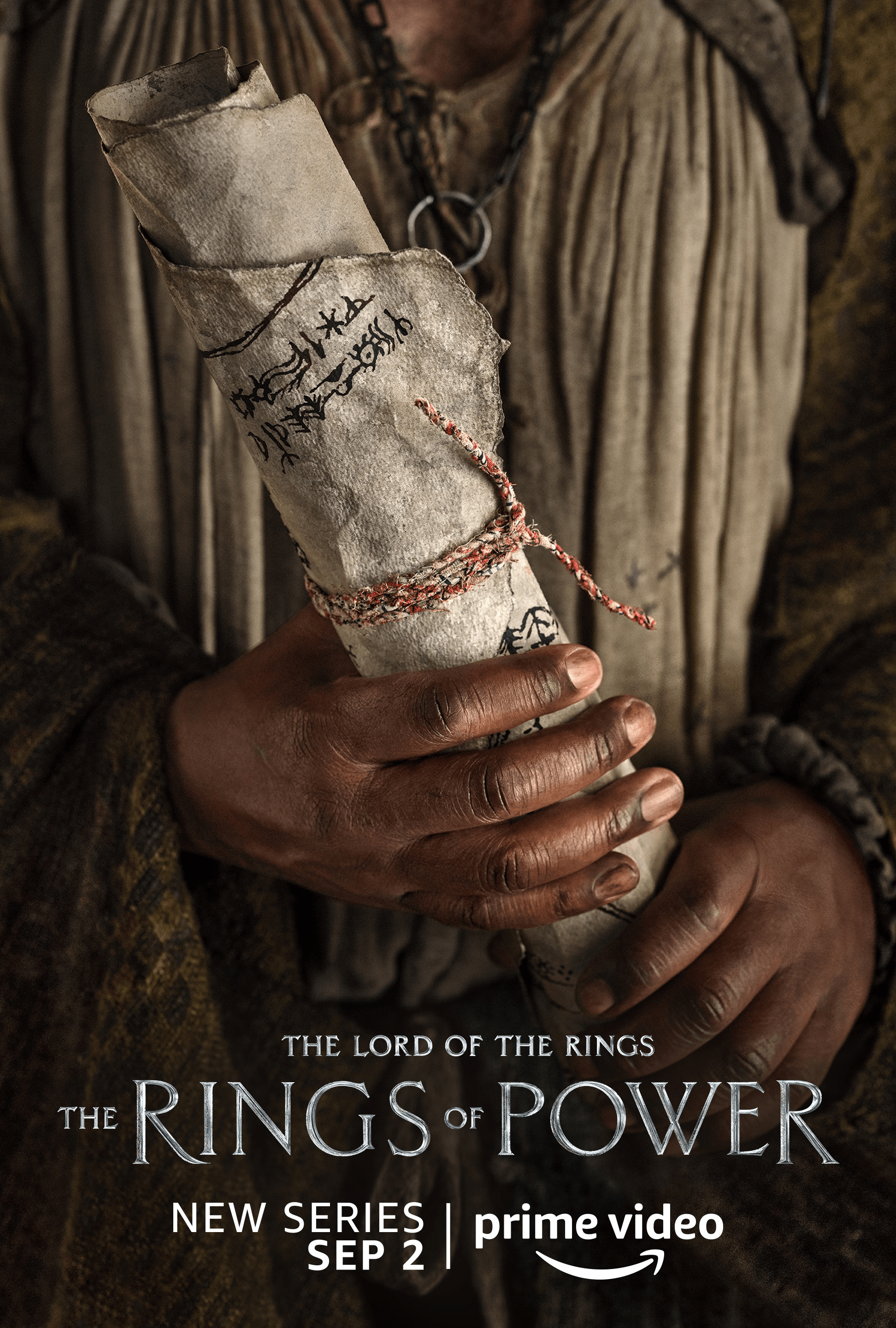
Another scroll-bearing mystery person, but here at least the text on it is clearly not Sindarin, so this is presumably not an Elf.
Shawls, Beautiful Shawls
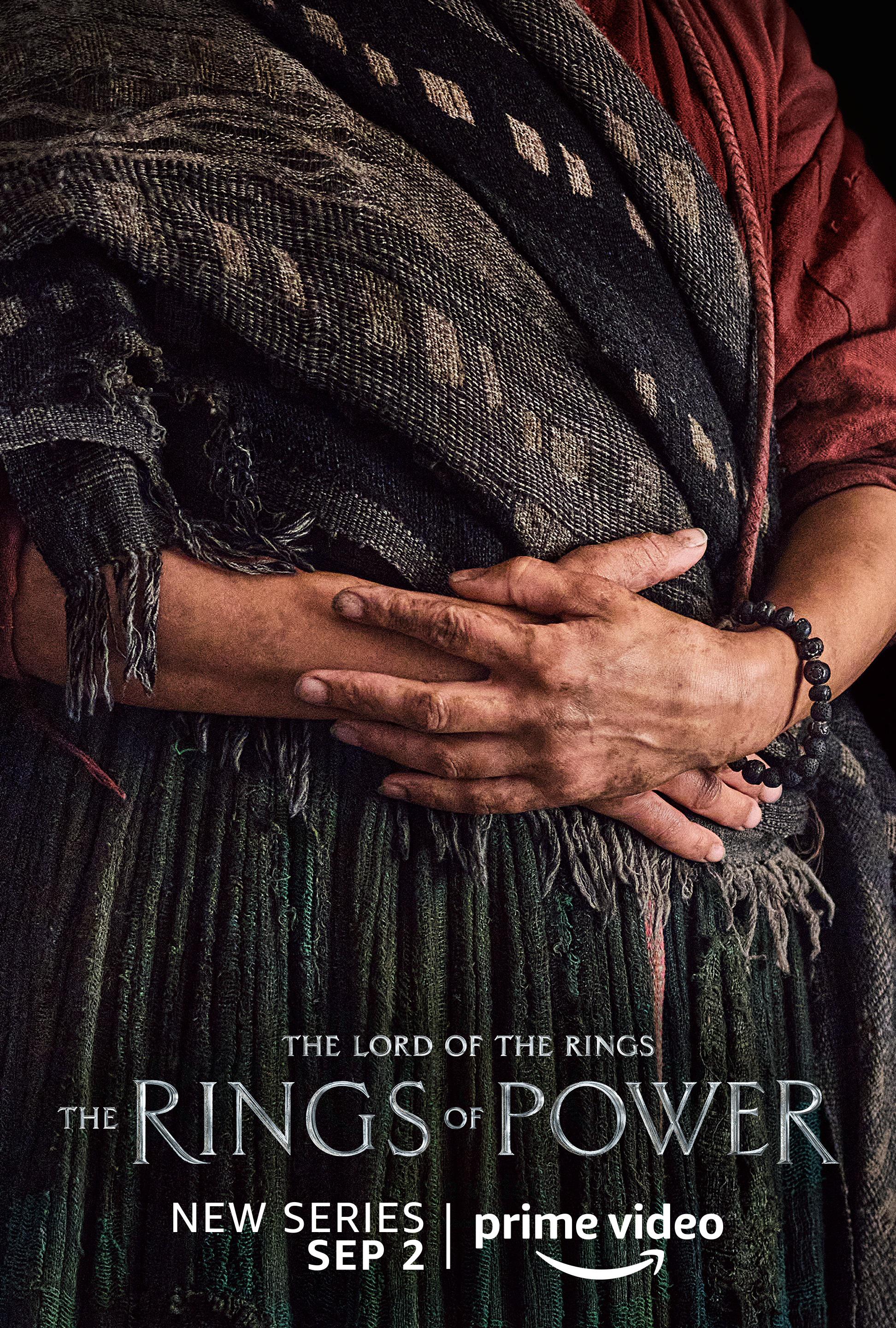
Whoever this is, we don’t even get some kind of tool or implement to associate them with, beyond their worn clothing. So no idea who this could be, other than the fact they’re perhaps closer to commonfolk than high society.
Tie ‘Em Up

There’s not much to go on here, other than the thick rope this character is hoisting over their shoulder. Wild guess: perhaps this is Círdan the shipwright, master of the port city of the Grey Havens, and eventual wielder of one of the three Elven rings of power, Narya? They are wearing a ring, but it seems rather non-descript to be one of the titular pieces of jewellery.
An Apple a Day Keeps the Dark Lord Away

A big day for fruit fans in Middle-earth, it seems (no cherry tomatoes, much to the chagrin of Denethor). Once again, the humble clothing here suggests a person of lower status compared to many of the elaborately-clothed people in these posters.
The Blossoms of a White Tree?

The interesting flower here could be quite the hint. Lord of the Rings fans all know the White Tree of Gondor atop Minas Tirith, of course, but the Gondorian’s ancestral people, the Númenóreans, had a similar tree of their own that that those trees (there were actually four White Trees of Gondor, including one Aragon finds after becoming King Elessar) descended from: Nimloth, which grew in the King’s court at capital of Armenelos. Its own blossoms were said to perfume the city as white flowers appeared on the tree at sunset — and Nimloth was eventually destroyed by Sauron in Númenór’s downfall during the Second Age.
Golden Robes for a Golden King?

To stick with Númenór for a bit longer, the large quantity of gold all over this person could suggest that we’re looking at Ar-Pharazôn, the last king of Númenór, also known as Ar-Pharazôn the Golden. After falling under the thrall of Sauron’s suggestions when the Dark Lord was captured by Númenór and brought to the island for imprisonment, Ar-Pharazôn was convinced to rise up against the Valar, setting sail with a might fleet to the Western lands of Valinor. The Valar, and, well, literally God, were not too happy about this, and Eru Ilúvatar promptly smashed the fleet, sunk Númenór, and… made the flat world of Arda a sphere? Yeah.
Even More Gold Glory
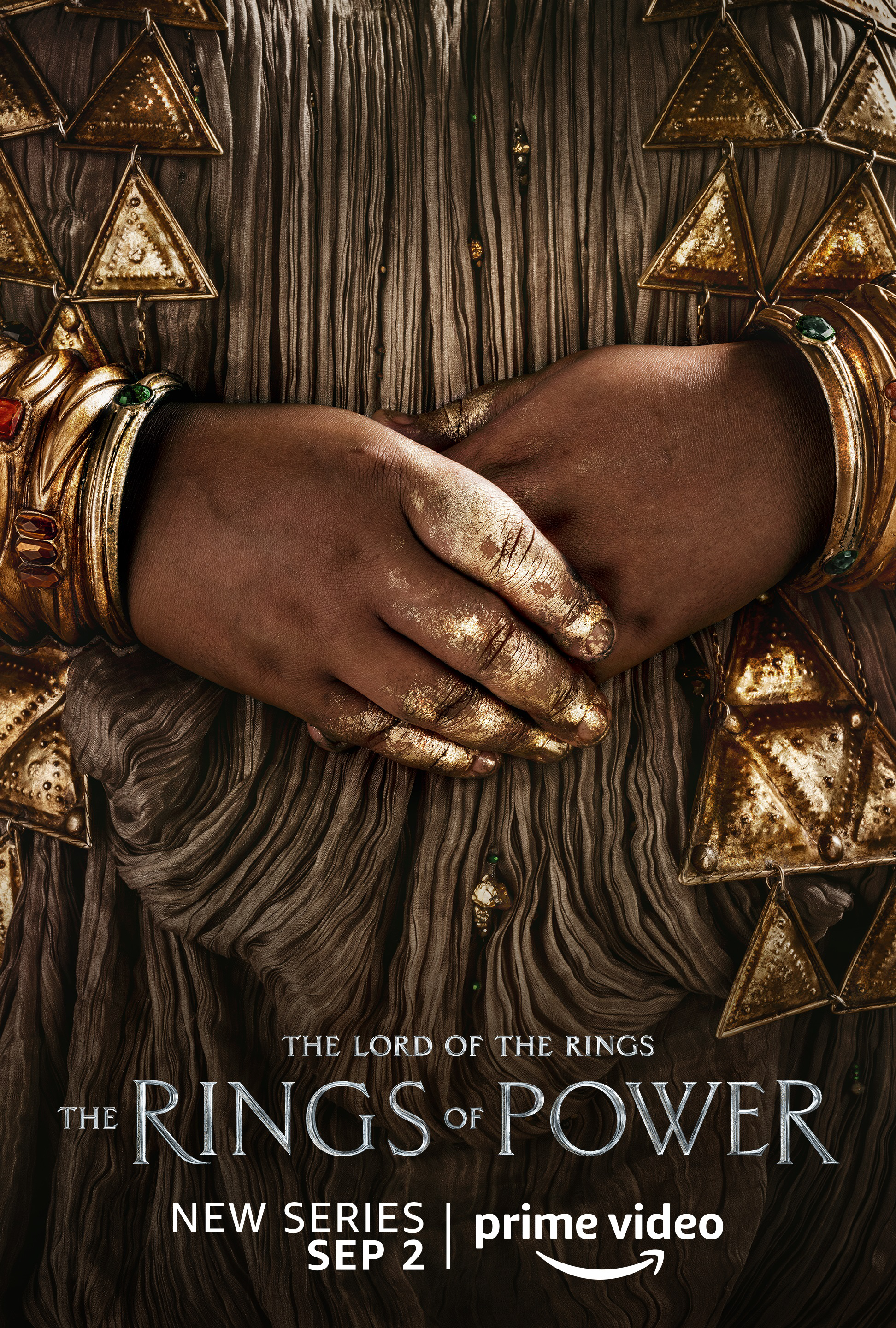
Once again, more elaborate gold finery here could suggest someone in Ar-Pharazôn’s court — perhaps even, given the jewels on their armlets and sown into their robe, Tar-Míriel (which means “Jewel-daughter” in one of the other Elven languages, Quenya), who Ar-Pharazôn not only married, but forced her to change her name to a Númenórean, Ar-Zimraphel, after Sauron had sown the seeds of dissent against the Elves on Númenór during his “captivity” there.
But maybe they’re not Tar-Míriel — and the person with the white blossom in the other character poster, covered in gold finery, could be. The gold dust caking their hands seems to at least potentially hint that this person could have a connection to the dwarf we saw in the earlier poster instead.
The Good Book

The mysterious ledger held by this person is covered in an elaborate aquatic pattern, a fish atop a crest of waves. But beyond that and the relatively plain robes here, your guess as to who this could be is as good as ours.
Starry Night
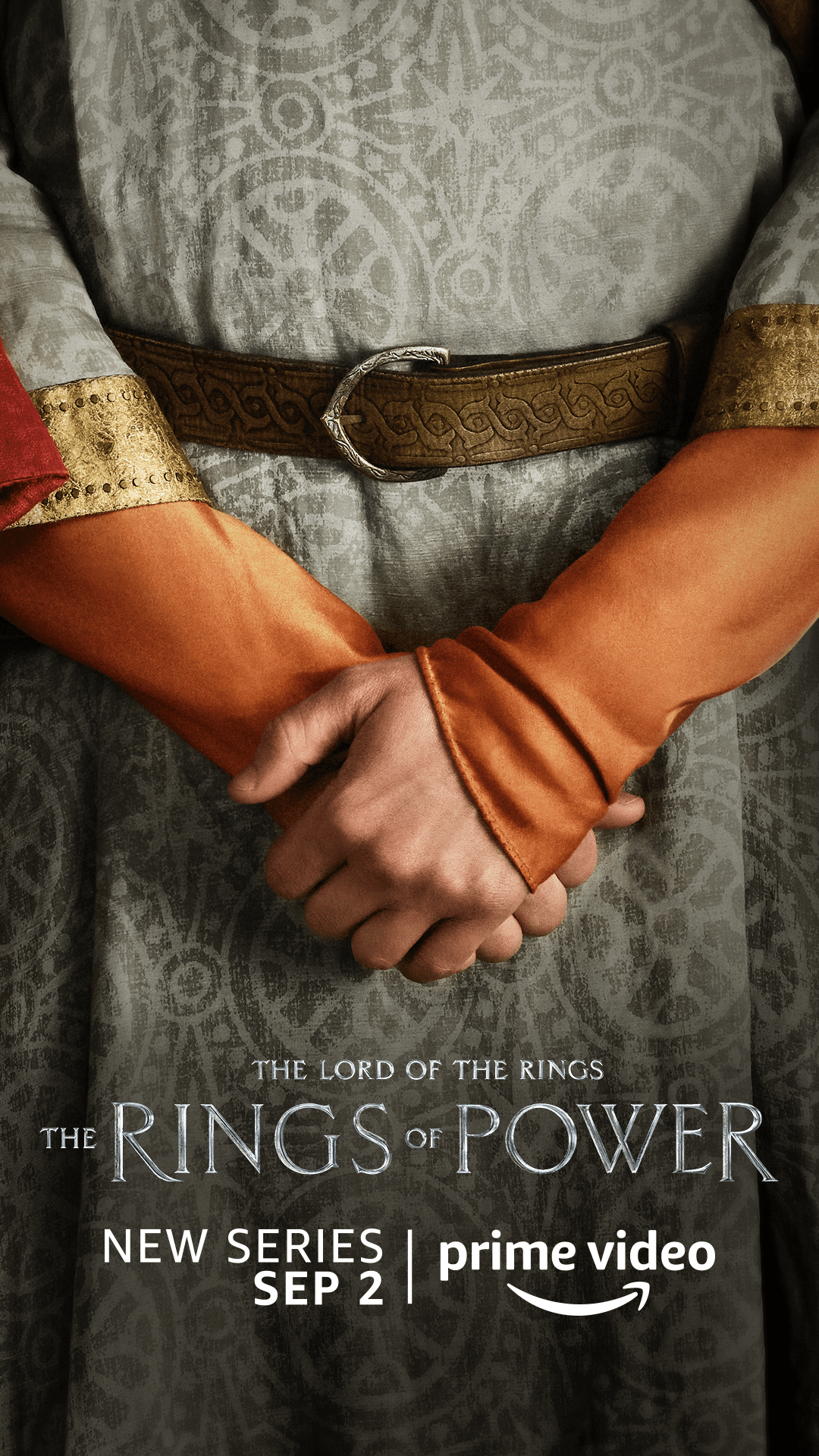
Another relatively plain image, but the patterning on the robe here could be quite interesting — it’s covered in eight-pointed stars, the emblem of the House of Fëanor. Fëanor and his descendants were Noldorin Elves who fell from grace after Morgoth stole the Silmarils, the powerful jewels crafted by Fëanor, in the First Age. Most of the House of Fëanor perished in that Age, but we do know one very important descendant survived into the Second Age: Celebrimbor, the master crafter who Sauron would eventually convince to help him craft the rings of Power.
A Sword of Suns

Well, whoever this is certainly loves themselves some sun imagery — suns on their chestpiece, suns on their pommel, hell, there’s even a sun on the blade itself. Perhaps, given that their name has connections to the word for “Sun” in Quenya, there’s a connection to Anárion, one of Elendil’s sons — and one of the few Númenóreans to resist Sauron’s corruption in the island nation’s downfall.
Even More Suns
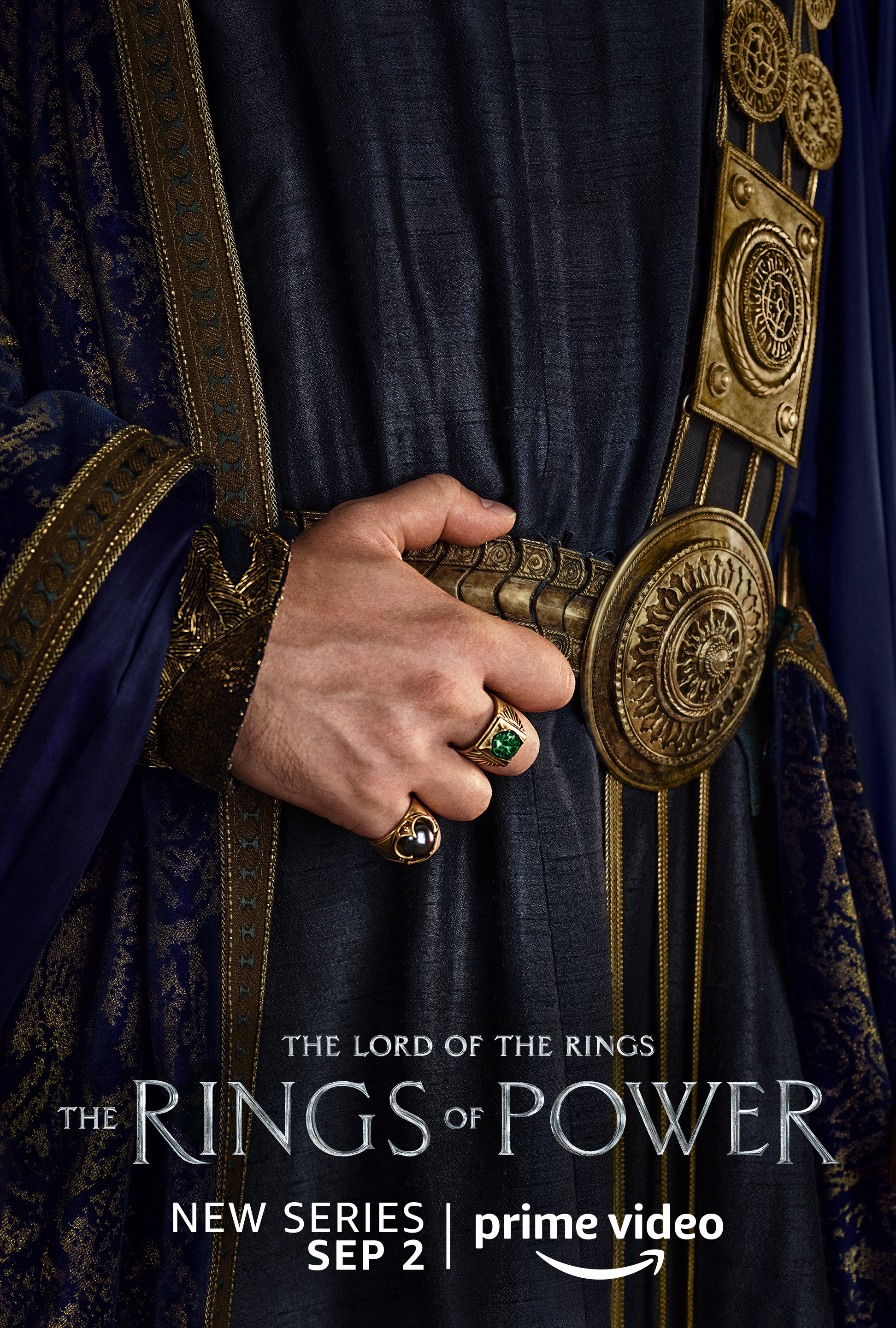
Much less armoured, but still covered in sun emblems — this person could be linked to the previous poster, but given our wild guess there was largely based on the meaning of Anárion’s name, the sun motif might not make as much sense to be someone else from Elendil’s family.
Two Trees, One Sword

This elaborately designed armour is gorgeous, but the most standout thing here is the blade in this person’s hands — completely with a beautiful pommel depicting two trees, one golden and one silver. There’s no doubt that these are connection to the very first image we saw from The Rings of Power: Valinor, and the ancient trees Laurelin and Telperion that once lit the land before the sun and moon even existed. Telperion shone silver light, and Laurelin gold — hence the coloration here.
A Dark Lord Rises

Well, at least this one’s obvious… or is it? Sauron has a few physical forms over the course of the Second Age — his actual form as a Lieutenant of the Dark Lord Morgoth, or disguised as Annatar, the Lord of Gifts, when he went to the elves of Eregion to convince them to forge his rings. But are we really seeing the most evil being in Middle-earth here, or simply one of his own agents?
Anyway, that’s all our guesses. If you’ve got your own, let us known in the comments — there’s plenty of time for us to keep guessing, given that The Lord of the Rings: The Rings of Power hits Prime Video on September 2.
